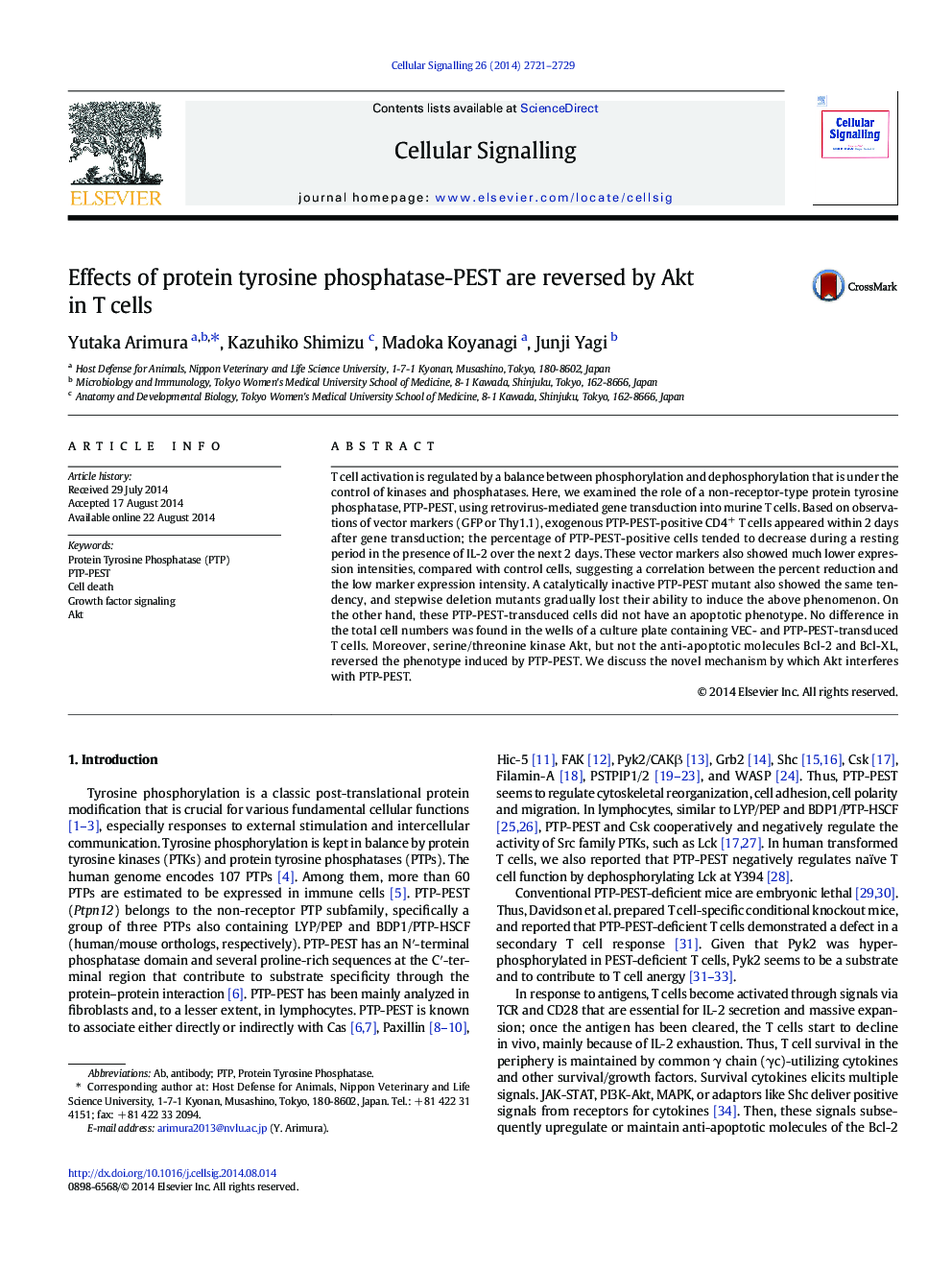| Article ID | Journal | Published Year | Pages | File Type |
|---|---|---|---|---|
| 10814905 | Cellular Signalling | 2014 | 9 Pages |
Abstract
T cell activation is regulated by a balance between phosphorylation and dephosphorylation that is under the control of kinases and phosphatases. Here, we examined the role of a non-receptor-type protein tyrosine phosphatase, PTP-PEST, using retrovirus-mediated gene transduction into murine T cells. Based on observations of vector markers (GFP or Thy1.1), exogenous PTP-PEST-positive CD4+ T cells appeared within 2Â days after gene transduction; the percentage of PTP-PEST-positive cells tended to decrease during a resting period in the presence of IL-2 over the next 2Â days. These vector markers also showed much lower expression intensities, compared with control cells, suggesting a correlation between the percent reduction and the low marker expression intensity. A catalytically inactive PTP-PEST mutant also showed the same tendency, and stepwise deletion mutants gradually lost their ability to induce the above phenomenon. On the other hand, these PTP-PEST-transduced cells did not have an apoptotic phenotype. No difference in the total cell numbers was found in the wells of a culture plate containing VEC- and PTP-PEST-transduced T cells. Moreover, serine/threonine kinase Akt, but not the anti-apoptotic molecules Bcl-2 and Bcl-XL, reversed the phenotype induced by PTP-PEST. We discuss the novel mechanism by which Akt interferes with PTP-PEST.
Keywords
Related Topics
Life Sciences
Biochemistry, Genetics and Molecular Biology
Biochemistry
Authors
Yutaka Arimura, Kazuhiko Shimizu, Madoka Koyanagi, Junji Yagi,
